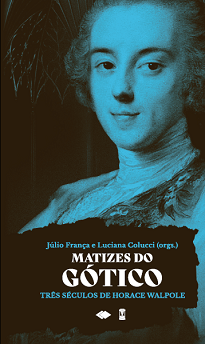
I’m very honoured to have my chapter ‘“Two kinds of romance”: Generic hybridity and epistemological uncertainty in contemporary paranormal romance’ included in this beautiful new book from Brazil: Matizes do gótico: três séculos de Horace Walpole, ed. by Júlio França and Luciana Colucci (Rio de Janeiro: Dialogarts, 2020). You can download the book as a free PDF from here.
This edited collection celebrates 300 years of Horace Walpole, considered to be the founder of the Gothic novel. There is a commentary on the volume in Portuguese here. Google Translate (I apologise for my ignorance of the language) has:
The importance of the author and the work is not only seminal: the Gothic machinery present in Otranto’s narrative was reused and re-elaborated by other writers who, over the last centuries, adapted it to different historical and geographical contexts and gave rise to Gothic narratives responsible for keep the Walpolian heritage alive.
This dossier is the result of the fruitful discussions that took place at the II SEG, and which are materialized in this edition. The theoretical nuances and critical approaches gathered here contribute to the firm defense of a genre that, although it still encounters some resistance amidst “high” criticism, has established itself as a tradition responsible for expressing and representing evil and fear in form of fictional narratives.
My own chapter (which is in English) talks about the generic hybridity of contemporary Paranormal Romance and compares this to Walpole’s own declaration of his novel The Castle of Otranto (1764) as being comprised of ‘two kinds of romance’. I look closely at two YA novels in the genre: Alyxandra Harvey, My Love Lies Bleeding (2010) and Julie Kagawa, The Iron King (2011). I consider the interference of genres in these novels as exhibiting epistemological uncertainties that haunt late modernity.
